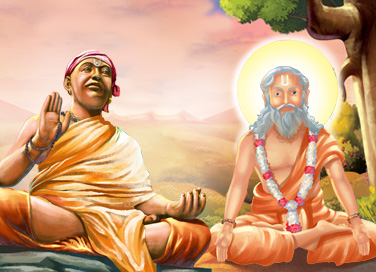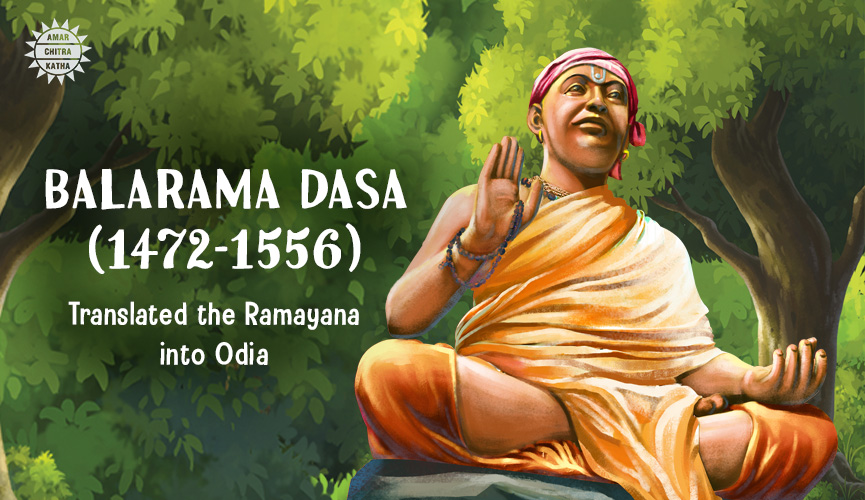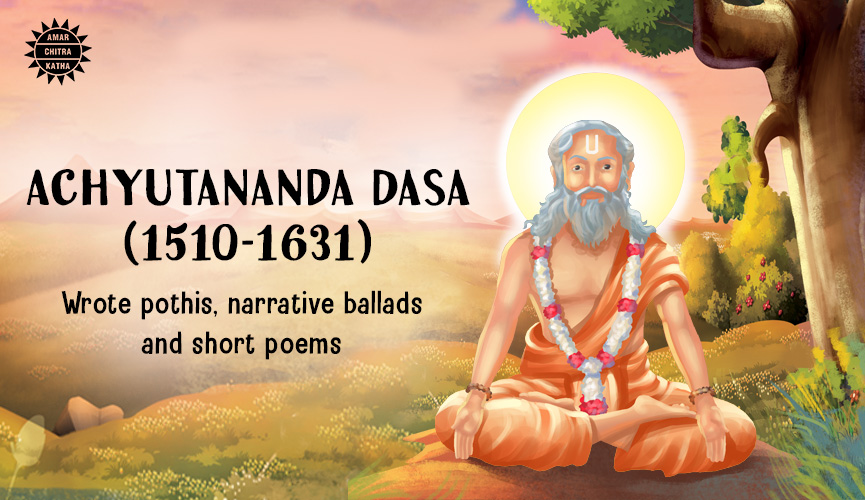The Pancha Sakha Poets
- June 26, 2024


The Pancha Sakha Poets
- June 26, 2024
By Jayshree Misra Tripathi
The Pancha Sakha or the Five Friends were a group of five poet-philosophers who heralded great change in Medieval Odisha (also known as Udra Desa). These scholars translated Hindu texts written in Sanskrit into simple prose, that could be easily understood by the common folk.
The Pancha Sakha resided in the court of Gajapati Prataprudra (1497-1533/4 AD). Here they met, at different periods in time, Sri Chaitanya Mahaprabhu, who was their mentor. They were also inspired by Sarala Dasa, a farmer belonging to the Shudra caste, who also translated epics into Odia. The Pancha Sakha poets followed in the tradition of Sarala Dasa. They wrote against social inequalities and these works became a form of ‘protest literature’.
To receive more such stories in your Inbox & WhatsApp, Please share your Email and Mobile number.
However, not much is known about these great men. Mystery shrouds their induction to the royal court and their knowledge of Sanskrit caused wonder, for they were from different castes. How and where did they learn Sanskrit? Did they listen to the chanting of mantras by the Brahmins at court and master the language? Who helped them understand these verses? It is fascinating to know that they shaped Vaishnava philosophy, spiritualism and literature in Odisha.

Balarama Dasa was the eldest of the poets. He was the son of a minister in the king’s court, named Somanatha Mahapatra, who hailed from the village Erabaga in the district of Puri. Somanatha was well-educated and proficient in Sanskrit. Balarama too, learnt Sanskrit and became a devotee of Lord Jagannatha. In his later years, he met Sri Chaitanya Mahaprabhu, who spent his last years in Puri. Balarama translated the Ramayana into Odia and called it Dandi Ramayana or Jagamohana Ramayana. In this work, he deviated from the original and created new narratives. He also faced persecution from priests for his temerity in translating the Bhagavad Gita, since theological and philosophical texts and scriptures had been handed down from generation to generation only in Sanskrit.
Jagannatha Dasa was born into a Brahmin family in Kapileswar Sasana village in Puri. His learned father was bestowed the title of ‘Purana Panda’ for his rendering of the holy verses. Jagannatha was trained by his father to become a scholar as well. Deemed to be ‘very great’, it is said Chaitanya Mahaprabhu bestowed Jagannatha Dasa with the title of ‘Ati Abdi’. It was he who composed lyrical poems from the traditional Radha- Krishna themes, with their devotional fervour, in colloquial speech. He also introduced poetry on ‘Rasa Lila’ (the wondrous dance of Krishna and the gopis). His notable works include Sri Krishna Lila and Artha Tattva.

Achyutananda Dasa was born near Cuttack and his grandfather, Gopinatha Mohanty, had served in the army of the Gajapati king. He was the most prolific writer in this group. Achyutananda had studied Ayurveda, Yoga and other sciences. His books were called Pothis. A poet-philosopher, he changed the narrative ballads and wrote short lyrical poems that were intensely devotional and found favour with the commonfolk. Some of his poems even bordered upon the erotic and were disapproved of by older Sanskrit scholars.
Born into a Kshatriya family in the village of Adhanga in present-day Jagatsinghpur, Yasobanta Dasa was married to the sister of a king. However, he renounced family ties and took the vow of a Sanyasi. Yasobanta journeyed to Puri inspired by Sri Chaitanya Mahaprabhu, who was then resident at Court. He was initiated into Vaishnavism whilst in Puri. Yasobanta Dasa’s noted translations are Gobinda Chandra, Siba Swarodaya and Prema Bhakta Brahma Gita.
Born in Balipatana near Bhubaneswar, Ananta Dasa dreamt he must go to Puri and meet Sri Chaitanya Mahaprabhu. He remained in Puri and began his writing. He was noted for his commentary on the Bhagavad Gita, ‘Amrutakana’, which was widely acclaimed. In his Udaya Bhagavata, he portrays Lord Jagannatha as the combined form of Radha and Krishna. His poetry too, was appreciated during his time. Ananta Dasa crusaded for the removal of caste discrimination, child marriage and widow remarriage – six hundred years ago!
These inspirational men were rebels of a kind, who brought our ancient culture and literature into the lives of all in their region.
Read more about inspirational historical figures on the ACK Comics app!
To receive more such stories in your Inbox & WhatsApp, Please share your Email and Mobile number.

Comic of The Month
The Naval Journey of India Book I
This book is the first of a three-book series that takes a deep and detailed look at India's Naval History and a deep insight into the lives of our men and women in white. But any series on the Indian Navy has to start at the very beginning - exploring India's celebrated maritime history. Join our little hero, Bharat, and his grandfather, Commodore Sagar, as they sail into the deep blue waters of time. Book I of The Naval Journey of India takes a sweeping look at India's maritime endeavours, how the seas impacted us over millennia and how the oceans made us who we are.